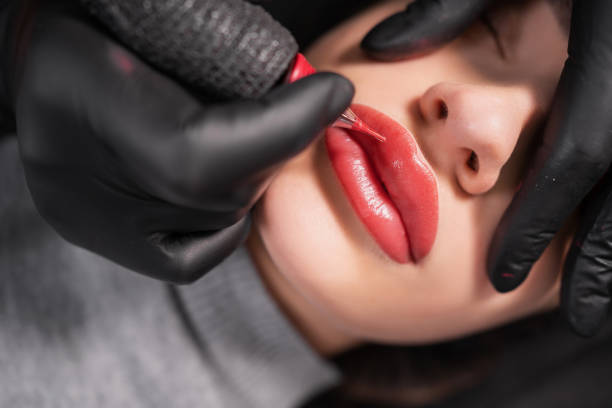Microblading is a semi-permanent technique that improves the look of sparse or uneven eyebrows by adding definition and fullness. It works with your natural features to enhance the overall shape and balance of your brows. Here are details to help you understand the microblading process.
Consulting for Brows
Microblading begins with a consultation with a professional. Your technician evaluates your skin type to determine how well it retains color. The desired brow shape and shade are reviewed to make sure they meet your individual preferences. Medical evaluations help identify any issues that could affect the procedure or recovery. This is also the ideal time to discuss your desired outcome. A clear understanding of the consultation process helps establish realistic expectations before proceeding.
Technicians employ brow mapping after consultation. Measuring instruments outline and map the brow area for symmetry. A temporary map allows for facial contours to be taken into account. Feedback is sought so that alterations can be made before the procedure. This provides for natural-looking improvements based on goals established from consultation. Mapping allows correct definition and brow shape.
Matching the Color
Technicians assess natural brow color, skin undertone, and hair sample all at once. When selecting a pigment, a professional considers these distinguishing factors to achieve the intended enhancement. This attention makes sure that each client’s desires are preserved, allowing them to achieve their unique results. Color matching reduces unnatural appearances and uneven fading.
Numbing the Area
Local numbness around the brow area is created by topical creams so that you experience minimal pain during the procedure. Secondary numbing agents are used for prolonged protection. These products wear off gradually after the session, allowing you to get on with your day without any issues. Numbing makes your process smooth and anxiety-free.
Cleaning the Brows
Technicians remove any pigment excess that’s left after the process, revealing defined brow shapes beneath. Soothing ointments applied to the area can nurture healing. This stage also includes directions on brow washing frequency, approved aftercare products, and contact precautions. Knowing cleaning steps helps set up what’s needed at home to maintain results. Avoid washing with harsh chemicals and direct sun exposure after the procedure.
Healing the Skin
Patients should anticipate a period of healing and peeling. Shedding and scabbing precede healing when pigment becomes set into milder tones. Coloration may appear momentarily earlier with temporary darkness or light blotches. An appointment following up on the procedure maintains the desired form.
After it has healed, you can schedule touch-up appointments if needed. Technicians fill in gaps, adjust a shape, or darken a shade during a touch-up session. This stage rectifies any detail that may have been missed during the procedure. The extra refinement this visit provides improves retention for semi-permanent results that last a long time. Securing a touch-up session is recommended to maintain the appearance of microbladed brows.
Prepare for the Microblading Process Today
Understanding each stage of the process helps give realistic expectations. Communication and preparation provide the necessary environment for this art to create beautiful brows. Applying aftercare helps maintain results and supports the healing process. Rely on eyebrow microblading technology to acquire new skills with advances in equipment and pigments. Book a consultation to get started.

